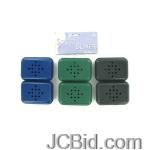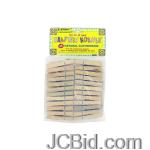
| Updated Blogs |
|
Computer Support Blog
Essensial Software for Web Based Support
HP Server and Desktop
HP ILO - Remote Tech-Support Software
More .....
|
 RSS Feed | Login
RSS Feed | Login Natural Health Remedies
know more about yourself and take care!!!
Blood Clotting- Is this Normal ??
By rickie wright at 2010-12-12 23:59:56
It is perfectly normal for blood to clot. A blood clot at the site of an injury protects us by stopping further blood loss and seals the body against external dirt and germs. This is a well known and understood phenomenon. What is less well known is that our bodies also frequently form clots inside our bodies. This is not a normal condition and can even be life threatening.
What Are The Symptoms of A Blood Clot?
The symptoms of a clot are varied, depending upon their origin, but almost always include sudden and/or severe pain at the site. All require immediate medical attention. Here's a list of the common types of clots and their symptoms:
Legs: Blood clots in the legs can often be overlooked as a pulled muscle, as they can feel like a "Charlie Horse" type of cramp. Look for swelling of the leg, warmth to touch, redness or bluish discoloration, pain.
Lungs: Sudden onset of shortness of breath. A stabbing, sharp chest pain that gets worse with deep breaths, fast heart beat and/or an unexplained cough that may contain blood.
Heart: A clot that has traveled to the heart will give the symptoms of a heart attack, severe, crushing-type chest pain, and shortness of breath.
Brain: A clot that has traveled to the brain is called an ischemic stroke, which is a blockage of blood flow. Its symptoms can include severe/sudden headache, confusion, blurred vision, dizziness, weakness on one side of the body, loss of balance or coordination/inability to walk, inability to speak or understand language.
Kidneys: Not as common as leg or lung blood clots, but kidney clots do occur. The symptoms are sharp pain in the lower back, usually on one side, inability to urinate, high blood pressure, retention of fluid, swollen ankles, and shortness of breath.
Blood clots can cause many conditions, one of the most common being deep vein thrombosis, or DVT. DVT occurs when blood gathers in the legs. This can cause the following symptoms:
Redness
Pain
Swelling
Heat
If the clot breaks off, it can flow through the heart and into the lungs, where it can become lodged. This blocks the tiny blood vessels of the lungs, preventing the flow of oxygen and nutrients. This can cause your lung tissue to die.
Diet for Blood Clotting
Different factors lead to blood clotting. Genetics and medical conditions can play a role in the development of blood clots. While a person cannot control these factors he can control others such as his diet. A person's diet can have a big effect on whether or not blood clotting will happen.
Nutrients including omega-3 fatty acids, vegetables, fruits, and fish are important for a heart healthy diet. It is important to design a diet that includes a balance of nutrients and antioxidants to prevent blood clotting.
Fatty fish contain omega-3 fatty acids. These wonder-nutrients lower cholesterol and are extremely heart friendly. The American Heart Association encourages everyone to eat at least 2 portions of cold water fish like salmon or tuna every week.
Flaxseeds are another source of omega-3s. Certain omega-3 fatty acids are found in plants, not fish. This is true with flaxseed. Soluble fiber and omega-3s help reduce cholesterol.
To reduce the sticky-ness of platelets add some hot sauce to your egg whites. Hot sauce, hot peppers, onions, ginger, and cayenne all work to keep blood platelets from becoming sticky and massing together.
Cholesterol and saturated fats, the two big 'no-no's in the food world, lead to blood clotting in the blood vessels and arteries. A person who eats foods high in cholesterol and saturated fats puts himself at a high risk for heart disease. The American Stroke Association has more information on the effects of bad cholesterol on blood clots.
Read about nature cure Also read about symptoms of ibs and home remedy for upset stomach .
Permalink | Comments (0)
Comments
To add a comment please login by clicking here
JC Store | JasmineCorp
|
JCBid
|Software
Development |
Domain
Registration | Hosting
| Web
Designing | Buy
Books |
Advertise
with JCSearch |
Whois
|
IP
Locator |
Add
Search |
Shopping
| Store
|
Free Blogs |
Free
GuestBook | Free
E-Cards |
Free
Games |
Free
Tutorials |
Set
as Home | Add
to Favorite
| Suggest
a Site |
Directory
Our Portfolio
| Terms of service
| Free quote
| Tell a Friend
| Special Offer
| Job Opportunities
| games
| Usenet Groups




